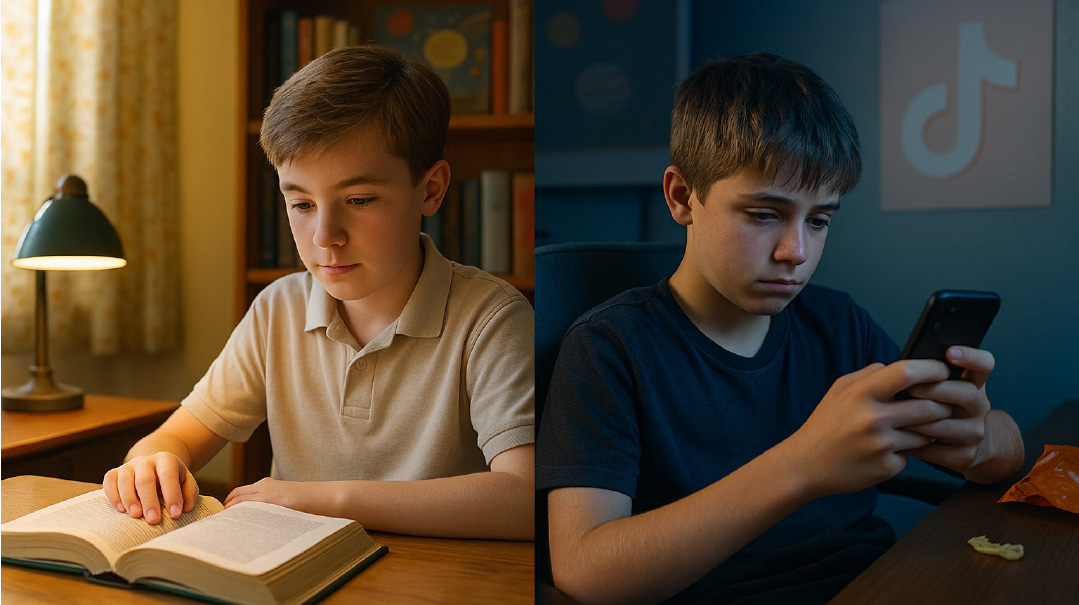Close Encounters

The better one knows someone, the less aware one is of his group identity
F
or someone like me who enjoys meeting new people, having my photo in Mishpacha each week is a blessing, as I’m often approached out of the blue by complete strangers.
On a recent trip to New York, I was waiting for the Monsey bus at a chassidishe beis medrash on 18th Avenue in Boro Park, when someone approached me excitedly. “You’re Yonoson Rosenblum! I’ve been reading you for decades.”
He proceeded to prove his point by referring to a column published ten years ago about a pamphlet on the state of our communal emunah written by Rabbi David Sapirman of Toronto. The article, he told me, has had a major impact on his thinking. Rabbi Sapirman wrote that many yeshivaleit today are on a conveyor belt with respect to issues of emunah. As long as everything is going well, and they don’t have to confront any challenges to their faith, they experience no emunah issues. But, in reality, they “neither believe nor disbelieve.”
The chassidish yungerman, Yitzchak, described a movie he had made, for a yeshivah fundraiser, in which he substituted the metaphor of a train for the conveyor belt. (Soon after our meeting, he sent me several of his short films, including one on tefillin.)
Two weeks later, I was even more surprised when I was approached by a chassidic bochur in LaGuardia Airport who asked, “Are you Yonoson Rosenblum?” He too claimed to be a regular reader, despite the fact that Yiddish, not English, was clearly his mother tongue. (His English was fluent, but accented.)
We had obviously been destined to meet. While waiting after Pesach to board a flight that would take him back to Israel and the Mir Yeshivah, his parents called him and told him to return to Williamsburg, as they had received a “yes” from the other side of a proposed shidduch. By the time we’d bumped into each other, he was already a chassan.
And I was at LaGuardia only because the day before I had gone to Newark Airport to catch a connecting flight to Toronto for my scheduled return to Israel but had been unable to find Air Canada. A closer look at my ticket revealed that my flight was actually from LaGuardia.
We had plenty of time to speak, as our original flight to Toronto was canceled due to a technical problem with our plane, and Air Canada had to fly in a replacement plane. I must have sounded a bit like an anthropologist as we discussed everything from his yeshivah education to his shidduch process (two brief meetings and then a third longer meeting after the engagement). As the seventh child in his family, his trust in his parents’ ability to find the right spouse for him, as they had done for his older siblings, was complete. He was clearly fully comfortable with all the nuances of his community, though he admitted that he would have preferred a better English education, and that was one of the reasons he started reading Mishpacha.
While I’m always thrilled to discover readers in unimagined places, I also felt a bit of embarrassment, and I recognized how little I knew of the inner workings of the chassidic world and the degree to which I too traffic in stereotypes (such as assuming I have no chassidic readers).
I have long been a vocal critic of the identity politics of the Left, i.e., the emphasis on group identity at the expense of individual identity. Now, I found myself in some way guilty of the same thing — at least of making assumptions about the reading habits of other Torah Jews based on their dress.
Obviously, I know many chassidim. At least two of my editors at Mishpacha, for instance, are chassidic. But when one knows someone personally, one tends to focus on the things one has in common with them (in my case, for example, fellow wordsmith, baal teshuvah, Ivy League graduate), and less on the points of distinction.
The better one knows someone, the less aware one is of his group identity. I am an avid reader, for instance, of Yated Ne’eman columnist Avrohom Birnbaum and greatly admire his original take on matters both communal and personal. We communicate not infrequently. Seldom, however, do I even remember that he is a Gerrer chassid.
Context then is everything. My only contact with younger chassidim has been in airports, where they are usually traveling in groups. When we observe people in groups, our brains trick us into thinking that the members of the group are all alike and note all the ways the group members externally differ from us. We assume a degree of difference from ourselves that may or may not exist, or, more accurately, may not exist with respect to any number of individuals in the group.
For years, I have been involved in Kesher Yehudi, an organization that creates ongoing relationships between secular and Torah Jews, in part to break down the stereotypes that each group holds of the other. My recent experience makes me wonder if there might also be room for an organization to pair chassidim and Litvaks together to learn more about one another and to discover the individuality of each, no matter what their group affiliation.
Make the Choice
In my book, Rav Noach Weinberg: Torah Revolutionary, I describe a young man who made a brief visit to Israel between Harvard College and Harvard Medical School. He found his way to Aish HaTorah, and while there, spent three straight days holed up with Rav Noach. At the end of those three days, he was fully committed to being an observant Jew — a commitment from which he has never veered in the nearly 50 years since.
He and his wife were our Shabbos guests last week, and he added a wrinkle to the story that I had never heard. He told me that upon returning to Harvard to begin medical school, he realized that he had a tremendous amount of Torah learning to catch up on, and would need to know a lot more to conduct himself as a Torah Jew and establish a Torah home.
And so during his first two years year in medical school, he did not attend classes. Rather he spent all the class time learning with chavrusas. He was still fully invested in his medical studies and maintained excellent grades. He attended all the anatomy labs and read the textbooks and the class notes of classmates. Anything less would have been irresponsible for anyone intending to practice medicine, and my friend is a baal achrayus.
But at a time when classmates were frantic about their ability to succeed at Harvard Medical School, he was gaining a basic Torah education. His entire life flipped on a dime during those three days with Rav Noach.
This was not someone incapable of analyzing arguments or evaluating evidence. He was a New York State debate champion in high school. And he published scientific articles as an associate professor at Columbia University’s medical school.
Almost as remarkable as the way he instantaneously changed his life, has been the half century of Torah life he’s lived since then with the same clarity. I noticed over Shabbos his meticulous fulfillment of every halachic detail, with no corners cut.... And all done so unobtrusively that unless one were paying close attention, one would not even notice.
My friend’s clarity should awe each of us, but also give us a standard to which we can strive. There is nothing about him that calls attention to himself. Yet the bochurim at the yeshivah where he davened Minchah every day and stayed afterward for a brief learning seder, during time taken from a packed day as the head of a major medical department, with over 100 professionals under his supervision, picked up on his erlichkeit and gravitated to him. Good for them for being sensitive to authentic erlichkeit. May we all work to obtain my friend’s clarity and emulate his example.
(Originally featured in Mishpacha, Issue 917. Yonoson Rosenblum may be contacted directly at rosenblum@mishpacha.com)
Oops! We could not locate your form.






